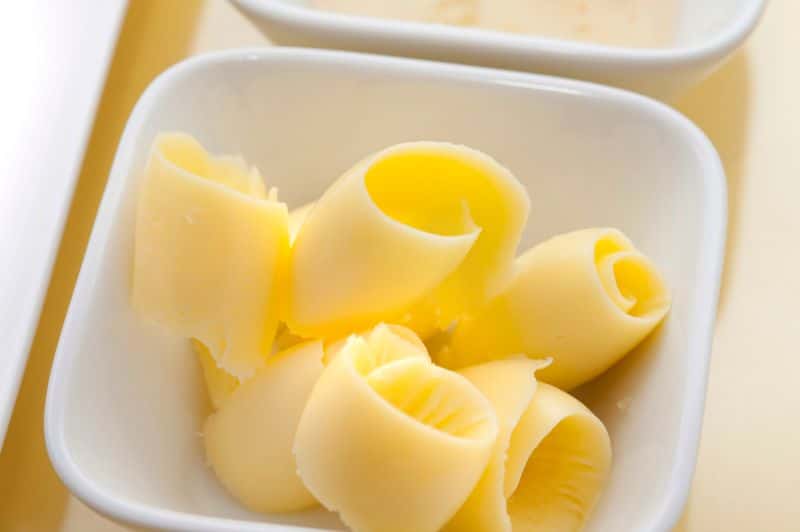Written by Irini Cavalliotis, Baking Business
Image: The Tin Pin Bakery, Bondi. Image by Sue Robbins Photography
Two decades ago, more than 80 per cent of households reported consuming margarine. But today, the “I can’t believe it’s not butter” mantra has gone by the wayside as ‘real butter’ labelling makes a proud comeback.
Around 60-70 per cent of fat spreads launched globally are now butter and, every month, more butter products burst onto the market, particularly in the US. Nut butters in particular are on the rise, carrying premium price tags.
Butter has enjoyed a lengthy stint in the spotlight recently since a trusted medical journal found there’s simply no evidence to support the notion saturated fat increases the risk of heart disease. In fact, it goes as far as to suggest a lack of saturated fat may be damaging – much to the delight of bakers and pastry chefs the world over.
The move to embrace butter is indicative of the much wider trend to abandon fake food for real food, which includes dairy. Choosing the most natural, least processed ingredients is the philosophy behind booming sales in artisan sourdough and anything containing ‘ancient grains’, most notably quinoa.
Nonetheless, not all butter is created equal. As chefs begin to highlight butter on the menu, the emphasis on high-quality butter – and even artisan butter – is also on the rise. Butter tasting is a now thing, where budding pastry chefs are taught to attune their palates to the intricacies of diverse milk and cream flavours. And, in the space locally-sourced eggs, ham and milk once occupied, organic butter is now popping up on café and restaurant menu descriptions to impress increasingly discerning consumers.
Science aside, good butter helps yeast dough rise better, makes pastry flakier and, overall, adds complexity to the taste. For example, the standard of French butter includes a minimum of 86 per cent butter fat content, making for less water and, therefore, more delicate pastry dough. High quality butters also hold their shape in warmer temperatures, while maintaining the perfect spreadability for toast and enough slow melt for vegetables.
Fonterra Foodservice Australia’s Kirsten Sturzaker encourages bakers and pastry chefs to approach butter with the same shrewdness as flour, and to spot quality through colour.
“The colour of butter will vary depending on the quality of the milk, in particular what the cows have been grazing on,” she says.
“In Australia and New Zealand, the cows are fed on pasture, so their milk contains a yellow-orange pigment called beta-carotene, which makes the butter yellow. In many other countries, especially Europe, the cows are fed on grain, so the colour of the butter is a pale, cream colour.”


